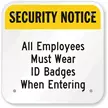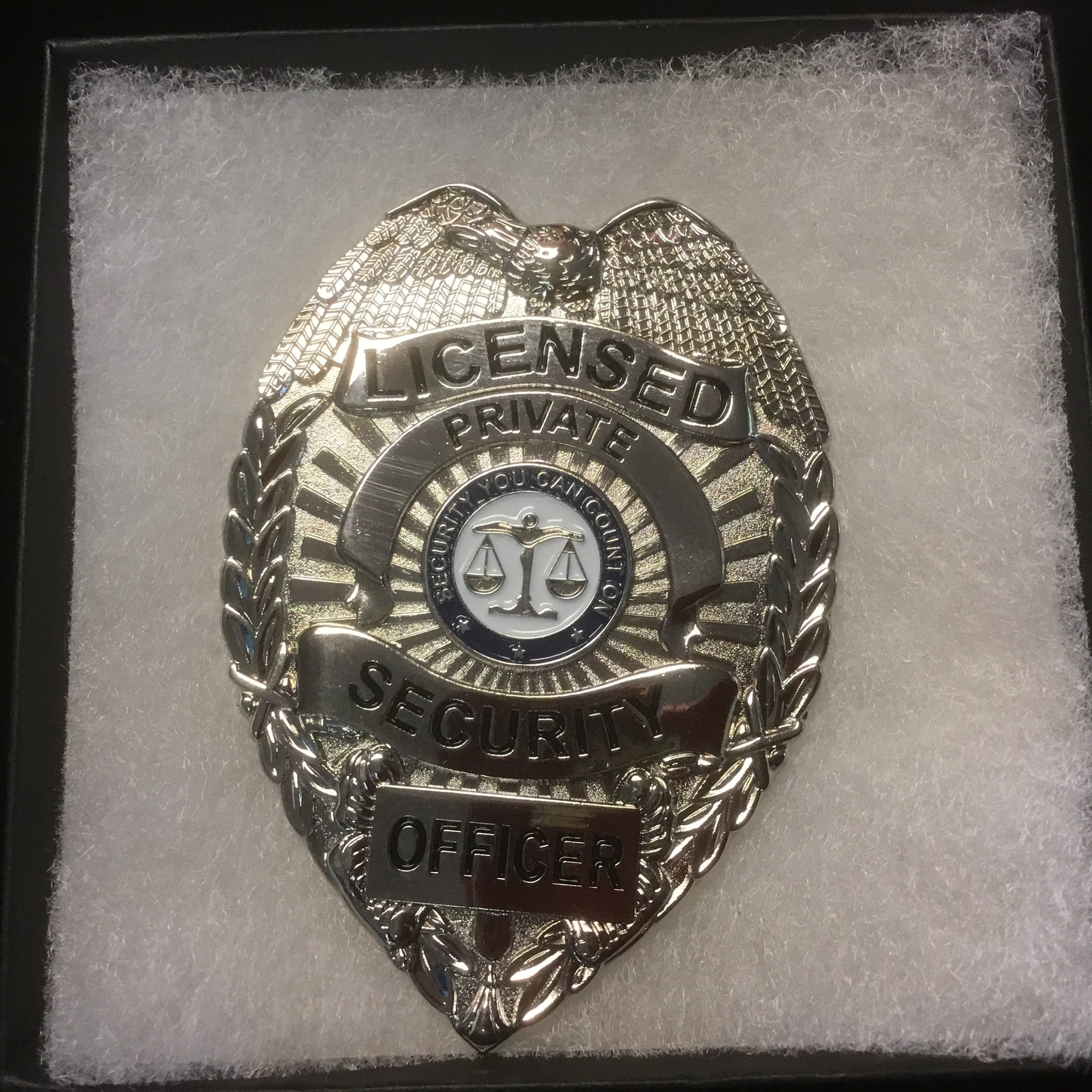Do Office-Based Officers Wear Badges?

When entering a corporate office environment, you may notice many employees donning badges. This accessory serves multiple purposes, from security to identification. This detailed post will explore the significance of badges in office settings, their various types, and the role they play in daily corporate life.
Why Badges Are Crucial in an Office Environment

Badges are more than just a piece of plastic or cloth with someone's name. Here’s why they are pivotal in the workplace:
- Identification: Primarily, badges help in identifying who’s who within the office. They not only display names but also job titles, departments, or even company affiliations.
- Security: In many corporate environments, badges are integral to access control systems. They ensure that only authorized personnel can enter restricted areas.
- Accountability: In case of any security breaches or incidents, badges can help track down individuals and their activities through logs or surveillance footage.
- Networking and Communication: Badges facilitate easier communication by allowing people to quickly identify someone’s role or department, thereby streamlining conversations and meetings.

Types of Office Badges

The types of badges vary depending on the organization's needs. Here are some common ones:
- Proximity Cards: These are swipe cards used to unlock doors or log into systems. They contain an embedded RFID chip.
- Clip-on Badges: Often used for temporary visitors or contractors, these are easily attached to clothing.
- Magnetic Stripe Cards: Similar to credit cards, these might be used for access control or as part of a time-keeping system.
- Photo ID Badges: Displaying an employee’s photo, name, and sometimes other identifying information. They are crucial for security checks.
- Smart Cards: Advanced versions that can store multiple forms of data, from biometric information to digital certificates.
🔍 Note: Companies might employ one or several types of badges depending on their security needs and employee identification protocols.
The Process of Acquiring an Office Badge

Obtaining a badge is usually part of the onboarding process for new employees or part of visitor management for guests:
- Request Submission: A new employee might need to submit a form or go through HR to initiate the badge creation process.
- Data Entry: Information such as name, photo, department, and clearance level is entered into the badge issuance system.
- Printing and Programming: The badge is printed with the necessary details. If it's a smart or proximity card, it might need to be programmed to grant access rights.
- Issuance: The badge is issued to the employee or visitor, who then might need to sign an acknowledgment form.
- Activation: The badge becomes active, allowing access to various office areas or systems.
🔍 Note: Depending on the office's security policy, temporary badges for visitors might bypass some steps, with a more streamlined process.
Do Office-Based Officers Always Wear Their Badges?

While the expectation for most employees to wear badges is common, the consistency can vary:
- Mandatory Policy: Many companies mandate the wearing of badges, with penalties or reminders for non-compliance.
- Flexible Rules: Some companies might not strictly enforce badge-wearing, especially in environments where identification is easily established through facial recognition or small team sizes.
- Special Circumstances: In areas with high security, such as government offices, wearing badges might be non-negotiable and continuously enforced.
- Practical Issues: Loss or damage of badges can lead to temporary lapses in badge-wearing until replacements are issued.

Advantages of Consistent Badge-Wearing

Here are some benefits of having everyone wear their badges:
- Enhanced Security: Immediate identification helps in maintaining security protocols without delays.
- Professionalism: Badges project a level of professionalism and organization, especially in customer-facing roles.
- Communication Aid: Quick identification reduces misunderstandings or mistaken identities in meetings or communications.
- Efficiency: Time is saved when access control systems can instantly verify an individual’s clearance level.
- Community Building: Badges can foster a sense of belonging, especially in larger organizations where it might be hard to know everyone by name.
Possible Disadvantages of Badge Mandates

While badges offer numerous benefits, there are also potential drawbacks:
- Privacy Concerns: Visible personal information might make some individuals uncomfortable or expose them to harassment.
- Inconvenience: The need to constantly carry a badge can be seen as an inconvenience, especially if not all areas require strict access control.
- Human Error: Badges might be forgotten or lost, leading to security and efficiency issues.
- Cost: Maintaining and replacing badges, especially smart cards, can be expensive for organizations.
🔍 Note: Companies often weigh these disadvantages against the benefits when considering badge policies.
Alternative Methods of Identification

Some companies might opt for alternatives or complementary methods:
- Biometric Authentication: Using fingerprints, facial recognition, or even voice recognition to verify identity.
- Mobile Apps: Employees can display virtual badges on their smartphones, reducing physical badge wear.
- Visual Recognition Software: Software can be trained to recognize employees’ faces, reducing the need for badges in certain contexts.
In this exploration of badges in office settings, we've delved into their purpose, types, and the complex interplay of policies and practicalities around wearing them. From identification to security, badges facilitate a structured and secure environment. However, the consistency of badge-wearing varies with company policies, culture, and the balance between security and personal convenience. Organizations continuously adapt their identification methods to meet modern needs, ensuring safety without compromising the human element of the workplace.
Why are badges important in an office environment?

+
Badges are crucial for identification, security, accountability, and facilitating communication and networking within an office setting.
What if an employee forgets their badge?

+
Companies might have backup measures like temporary badges or manual checks by security personnel, and often there are penalties for repeated forgetfulness.
Are there alternatives to physical badges?

+
Yes, alternatives include biometric authentication, mobile apps for virtual badges, and visual recognition software.
Can badges improve workplace culture?

+
Yes, badges can foster a sense of belonging and community, especially in larger organizations where knowing everyone by name can be challenging.
How do companies ensure the privacy of badge data?

+
Companies might encrypt data on badges, ensure only necessary information is visible, or use smart cards with personalized security protocols to protect employee privacy.